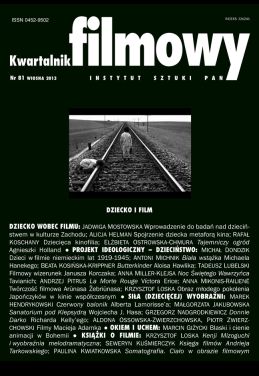Emil i naziści. Dzieci w filmie niemieckim lat 1919-1945.
Emil and the nazis. Children in the German fillm during the period of 1919-1945.
Author(s): Michał DondzikSubject(s): Theatre, Dance, Performing Arts
Published by: Instytut Sztuki Polskiej Akademii Nauk
Keywords: Children; German cinema; Nazi cinema; Weimar cinema
Summary/Abstract: German film in the period of 1919-1945 is usually understood to be divided by the watershed of 1933. The separation of German film into two eras – the Weimar and the Third Reich – entails the omission and misrepresentation of certain events. One of them is the theme of child characters. The young ones are the most common objects of desire or victims of indoctrination. In the case of important roles, children were played by adults. Characters known to viewers from the Weimar cinema appear in new roles in the Nazi cinema. Paradoxically, in the Weimar Republic a range of films depicting children was made. These films supported the theory of eugenics, and constituted the announcement of the policy of Nazi Germany. However in the Third Reich the convention of entertainment and the popular theme of school life allowed for films with an anarchistic message. By adopting the perspective of children one can see the continuity between both cinematographies. It also allows one to break with the stereotyped division of German cinema into the period of democratic Weimar cinema and Nazi propaganda films.
Journal: Kwartalnik Filmowy
- Issue Year: 2013
- Issue No: 81
- Page Range: 70-82
- Page Count: 13
- Language: Polish

